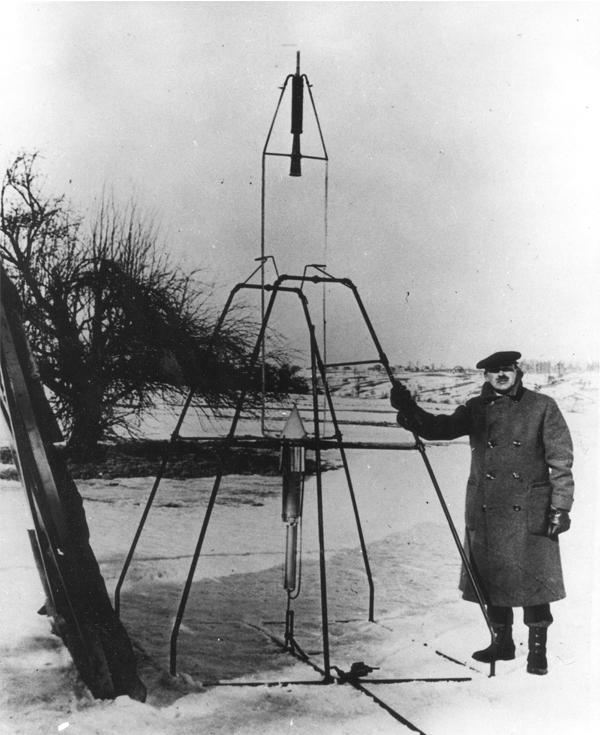
First liquid-fueled rocket on March 16, 1926
Firebombing of Tokyo: The first man to give hope to dreams of space travel is American Robert H. Goddard, who successfully launches the world’s first liquid-fueled rocket at Auburn, Massachusetts, on March 16, 1926. The rocket traveled for 2.5 seconds at a speed of about 60 mph, reaching an altitude of 41 feet and landing 184 feet away. The rocket was 10 feet tall, constructed out of thin pipes, and was fueled by liquid oxygen and gasoline.
The Chinese developed the first military rockets in the early 13th century using gunpowder and probably built firework rockets at an earlier date. Gunpowder-propelled military rockets appeared in Europe sometime in the 13th century, and in the 19th century British engineers made several important advances in early rocket science. In 1903, an obscure Russian inventor named Konstantin E. Tsiolkovsky published a treatise on the theoretical problems of using rocket engines in space, but it was not until Robert Goddard’s work in the 1920s that anyone began to build the modern, liquid-fueled type of rocket that by the early 1960s would be launching humans into space.
Goddard, born in Worcester, Massachusetts, in 1882, became fascinated with the idea of space travel after reading the H.G. Wells’ science fiction novel War of the Worlds in 1898. He began building gunpowder rockets in 1907 while a student at the Worcester Polytechnic Institute and continued his rocket experiments as a physics doctoral student and then physics professor at Clark University. He was the first to prove that rockets can propel in an airless vacuum-like space and was also the first to explore mathematically the energy and thrust potential of various fuels, including liquid oxygen and liquid hydrogen. He received U.S. patents for his concepts of a multistage rocket and a liquid-fueled rocket, and secured grants from the Smithsonian Institute to continue his research.
In 1919, his classic treatise A Method of Reaching Extreme Altitudes was published by the Smithsonian. The work outlined his mathematical theories of rocket propulsion and proposed the future launching of an unmanned rocket to the moon. The press picked up on Goddard’s moon-rocket proposal and for the most part ridiculed the scientist’s innovative ideas. In January 1920, The New York Times printed an editorial declaring that Dr. Goddard “seems to lack the knowledge ladled out daily in high schools” because he thought that rocket thrust would be effective beyond the earth’s atmosphere. (Three days before the first Apollo lunar-landing mission in July 1969, the Times printed a correction to this editorial.)
In December 1925, Goddard tested a liquid-fueled rocket in the physics building at Clark University. He wrote that the rocket, which was secured in a static rack, “operated satisfactorily and lifted its own weight.” On March 16, 1926, Goddard accomplished the world’s first launching of a liquid-fueled rocket from his Aunt Effie’s farm in Auburn.
Goddard continued his innovative rocket work until his death in 1945. His work was recognized by the aviator Charles A. Lindbergh, who helped secure him a grant from the Guggenheim Fund for the Promotion of Aeronautics. Using these funds, Goddard set up a testing ground in Roswell, New Mexico, which operated from 1930 until 1942. During his tenure there, he made 31 successful flights, including one of a rocket that reached 1.7 miles off the ground in 22.3 seconds.
Meanwhile, while Goddard conducted his limited tests without official U.S. support, Germany took the initiative in rocket development and by September 1944 was launching its V-2 guided missiles against Britain to devastating effect. During the war, Goddard worked in developing a jet-thrust booster for a U.S. Navy seaplane. He would not live to see the major advances in rocketry in the 1950s and ’60s that would make his dreams of space travel a reality. NASA’s Goddard Space Flight Center in Greenbelt, Maryland, is named in his honor.
History Channel / Wikipedia / Encyclopedia Britannica / NASA / ESA / Smithonian National Air and Space Museum.edu 
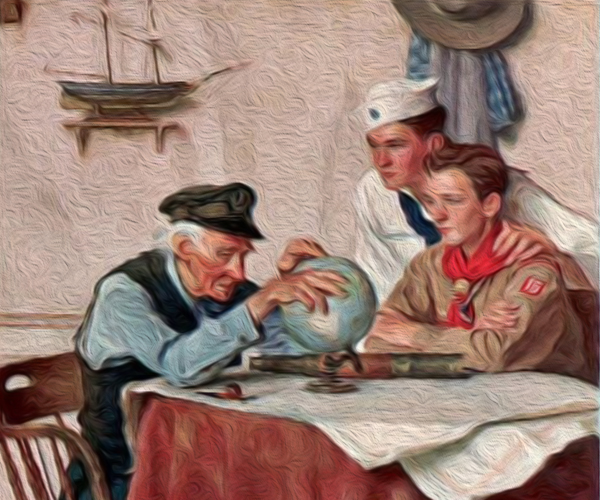
Understanding Military Terminology - Mounting
(DOD) 1. All preparations made in anticipation of an operation, including assembly in the mounting area, preparation and maintenance within the mounting area, movement to loading points, and subsequent embarkation into ships, craft, or aircraft if applicable.
2. A carriage or stand upon which a weapon is placed. Joint Publications 3-02.1 (Amphibious Embarkation and Debarkatio)

The Old Salt’s Corner
“Ghost Ship Omen”
Scientists say it’s just a mirage,
but sailors claim the ghost ship floats
in air, with stormy seas below.
Again he tries to round Cape Hope.
Captain van der Decken angered God
one savage 18th Century night.
Vowed he’d sail till “Judgment Day”,
to cross the Table Bay, he’d fight.
The Flying Dutchman disappeared
sank deep in foggy, wind-swept sea,
but the captain’s doomed to walk the deck
each night in perpetuity.
King George the Fifth, the Prince of Wales
are two who saw the Dutchman.
Although these royal heirs survived,
most meet death - the captain’s omen.
His curse prevails in Wagner’s Opera
and Washington Irving’s story;
crews tremble, ghost ship emerges
Dutchman floats in frightening glory.
So many sailors and their ships
still meet demise on starless nights,
when demons steer the Dutchman
and a vengeful God reads last rites.
Till this day the Flying Dutchman
looms threatening on a ravaged sea.
For Judgment Day the captain waits,
luring crews to their destiny.
~ Carolyn Devonshire

“I’m Just Sayin”
“We tend to overestimate the effect of a technology in the short run and underestimate the effect in the long run.”
~ Amara's law

“Thought for the Day”
“Empathy is seeing with the eyes of another, listening with the ears of another and feeling with the heart of another.
~ Alfred Adler

“What I Have Learned”
“ILife is all about evolution. What looks like a mistake to others has been a milestone in my life.”
~ Amisha Patel

Bizarre News (we couldn’t make up stuff this good – real news story)
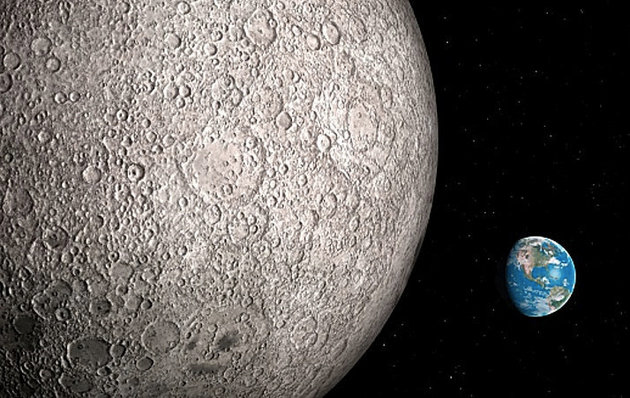
It was 1969, two months before Apollo 11's historic first manned landing on the moon, when Apollo 10 entered lunar orbit, which included traversing the far side of the moon when all spacecraft are out of radio contact with Earth for about an hour and nobody on Earth can see or hear them.
As far as the public knew, everything about the mission went smoothly.
Almost four decades went by before lost recordings emerged that revealed something unsettling that the three Apollo astronauts had experienced while flying above the far side of the moon.
Huffington Post - NASA (02/20/2016)

Mr. Answer Man Please Tell Us: Why Does My Eyelid Sometimes Twitch?
It usually feels like it come out of nowhere. You're reading a book, staring at the computer, driving to work—and then suddenly your eyelid starts quivering uncontrollably. It's a fairly unwelcome occurrence, and unfortunately, no one has a clear explanation for what causes these odd little tremors.
However, cutting back on afternoon lattes might help. Dr. Wayne Cornblath of the University of Michigan’s Kellogg Eye Center told Time that too much caffeine appears to be a possible cause of these tiny muscle spasms. As a stimulant, caffeine makes your body release serotonin and noradrenaline. These neurotransmitters increase reactivity in the muscles and nerves, explaining why your eyelid might go haywire after a venti Starbucks.
Stress may also be a contributing factor since it ramps up production of epinephrine, a molecule connected with the fight-or-flight response that can cause muscle contractions or spasms. There’s also a correlation between eyelid-twitching and a lack of sleep, but researchers still haven’t figured out the specific underlying explanation. Meanwhile, the Mayo Clinic offers a litany of other potential causes, including alcohol consumption, smoking, bright light, physical exertion, irritation of the eye surface or inner eye, and wind.
When both eyes twitch, there's a name for it: blepharospasm. There are more drastic ways to prevent this kind of twitching than by cutting down on caffeine and avoiding stress. According to The New York Times, severe, disruptive blepharospasm “can be treated with Botox, which is injected into the muscles of the eyelids to quell the spasms.”
While eyelid twitching is common, you should consult a doctor if the spasms spread down your face and neck, if your whole eyelid starts involuntarily blinking, or if the twitch doesn’t go away. These may be symptoms of a more serious condition.
All About Vision
• Bausch & Lomb
• Web MD
• Mental Floss
• TIME
• Wikipedia

Where Did That Saying Come From?
“A Baker's Dozen:” We know 12 is a dozen.
By law, Medieval English bakers could be severly punished if they cheated a person out of the correct number when buying items such as loaves of bread, biscuits or cookies from a baker.
The baker would put an extra loaf in the bag just in case he miscounted. Therefore, the customer was sure to get the dozen he ordered and an extra one bringing the total to 13 which is “a baker's dozen”.
The “baker's dozen” may have originated as a safe way for bakers to avoid being blamed for short changing their customers.
Examiner

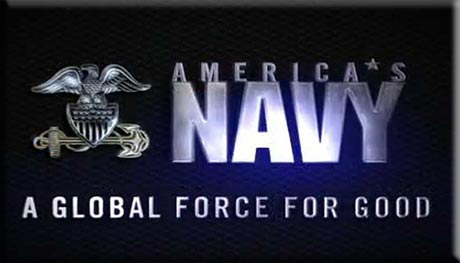
NAVSPEAK aka U.S. Navy Slang
“I Believe” Button: A fictitious button to be pressed when complex technical details are not immediately understood, but there is not time to go into laborious explanation. “Just press the 'I believe' button for now and we'll talk about it later.”
IBM (Instant Boatswain's Mate): Term used to describe a sailor who has just failed out of a rather difficult A-School (Nuc, ET, AT) and will now head to the fleet (and obvious deployment) undesignated. Phraseology: Instant Boatswain's Mate, just add water.
Ice Cream Social: Ice cream that is typically served at 2100 on the mess decks on Sundays when underway.


Just for you MARINE
JAG: Judge Advocate General, colloquial name for the legal entity within the Marine Corps, more properly called Judge Advocate Division, from the Judge Advocate General of the Navy, the naval officer who oversees both the Navy's and Marine Corps' legal entities; also, a television show by the same name.
Jarhead: Pejorative term for a Marine. Jarhead has several supposed origins: the regulation “High and Tight” haircut resembles a mason jar (to add insult, some note that the jar is an empty vessel, also therefore a Marine's head an empty vessel); the Mason Jar Company stopped making jars and made the helmets for Marines during World War II.
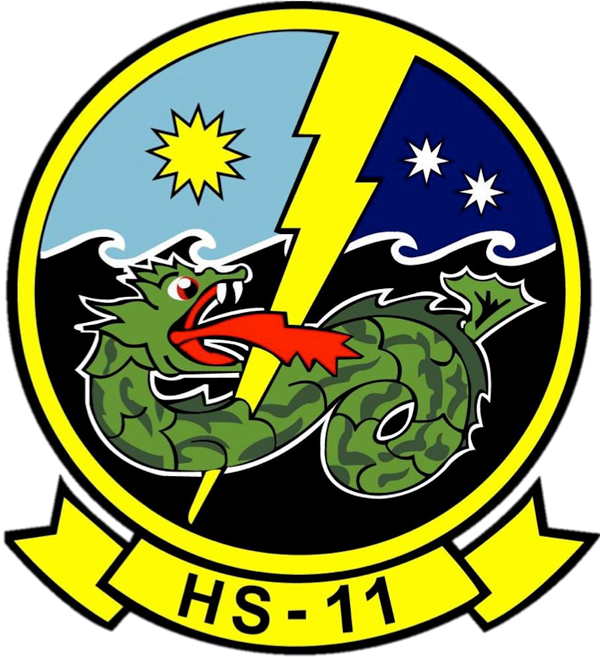
Naval Aviation Squadron Nicknames
HS-11 - Helicopter Anti-Submarine Squadron ELEVEN: “Dragonslayers”
Naval Air Station Jacksonville, Florida
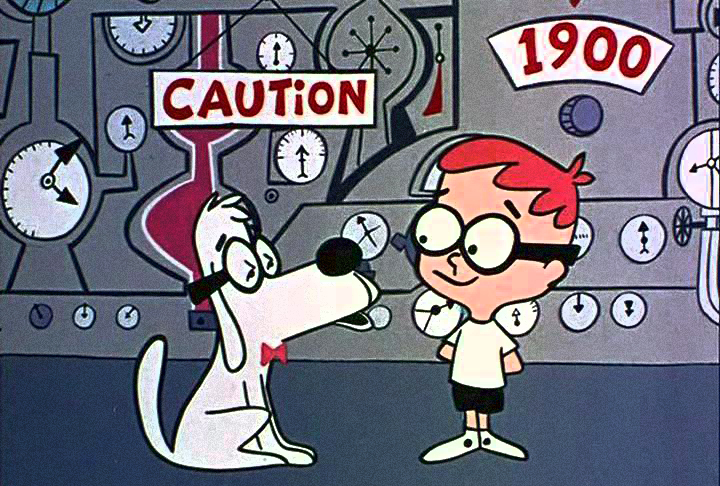
Science & Technology

Synaptics tiny, thin fingerprint sensor fits in volume rocker
• U.S. would let Apple keep software to help FBI hack iPhone
• Smartphones to replace cards at bank machines
• Five-dimensional black hole could “break” general relativity
Phys.org

The Strange, Mysterious or Downright Weird
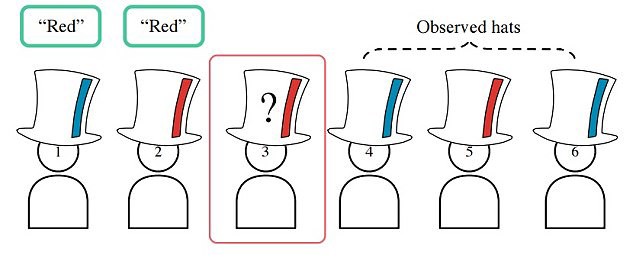
A pair of riddles used during job interviews for Google and Goldman Sachs may have many applicants perplexed, but it's no problem for artificial intelligence.
Google's deep neural network was put through the tests of the “hats riddle” and the “switch riddle” both which require complex-problem solving to determine the fates of hypothetical prisoners.
AI called “deep distributed recurrent Q-networks”, (DDRQN) have demonstrated for the first time that they can work together to solve problems, a team from the University of Oxford, Canadian Institute for Advanced Research, and Google DeepMind proposes.
Daily Mail (02/19/2016)


SONG FACTS
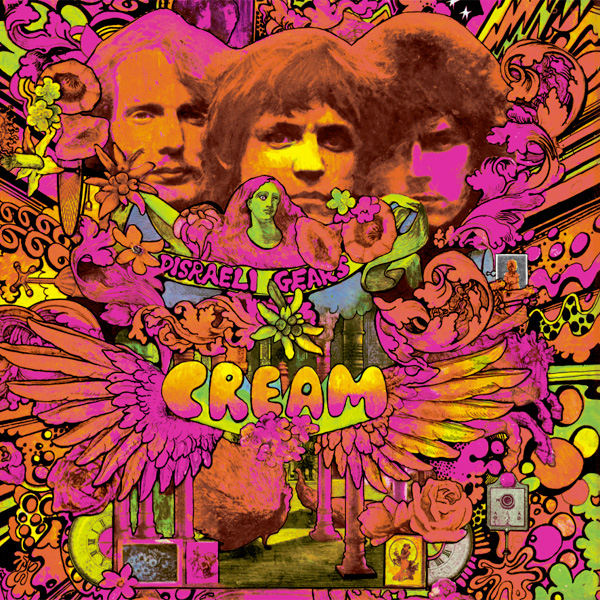
“Sunshine of Your Love” - Cream
Album: Disraeli Gears
Released 1967 
The lyric was written by Pete Brown, a beat poet who was friends with Ginger Baker and Jack Bruce. He also wrote lyrics for “I Feel Free” and “White Room”  . Eric Clapton and Jack Bruce wrote the music.
. Eric Clapton and Jack Bruce wrote the music.
Jack Bruce.'s bass line carries the song. He got the idea for it after going to a Jimi Hendrix concert. When Kees van Wee interviewed Bruce in 2003 for the Dutch magazine Heaven, Kees asked him which of his many songs epitomizes Jack Bruce the most. At first he was in doubt whether he should answer “Pieces Of Mind” or “Keep On Wondering”, but then he changed his mind and opted for “Sunshine Of Your Love”. Because, Said Bruce, “It's based on a bass riff. And when you enter a music shop this is the song that kids always play to try out a guitar.”
Pete Brown wrote the opening line after being up all night working with Bruce and watching the sun come up. That's were he got, “It's getting near dawn, when lights close their tired eyes.”
Tom Dowd, who worked with most of the artists for Atlantic Records at the time, engineered the Disreali Gears album. Dowd was renowned for his technical genius, but also for his ability to relate to musicians and put them at ease.
When Cream recorded this song, it wasn't working. In the documentary Tom Dowd And The Language Of Music, he explained: “There just wasn't this common ground that they had on so many of the other songs. I said, 'Have you ever seen an American Western where the Indian beat - the downbeat - is the beat? Why don't you play that one. Ginger went inside and they started to run the song again. When they started playing that way, all of the parts came together and they were elated.”
According to Rolling Stone magazine's Top 500 songs issue, Jack Bruce knew the song would do well. “Both Booker T. Jones and Otis Redding heard it at Atlantic Studios and told me it was going to be a smash”, he recalled.
One man who was not impressed was Ahmet Ertegun, who was head of the group's label. When Bruce revealed the song at the sessions, Ertegun declared it “psychedelic hogwash”. Ertegun constantly tried to promote Eric Clapton as the band's leader, and also didn't believe the bassist should be a lead singer. He only relented and agreed to champion this song after Booker T. Jones came by and expressed his approval.
This is one of Eric Clapton's favorites from this days with Cream; he played it at most of his solo shows throughout his career. When Cream played some reunion concerts in 2005, they played the song as their encore.
Jimi Hendrix covered this at some of his concerts, unaware that he was the inspiration for the bass line.
Hendrix did an impromptu performance of the song when he appeared on Happening for Lulu, BBC TV show in England hosted by the prim and proper “To Sir With Love” singer. After playing part of his scheduled song “Hey Joe”  , Hendrix stopped the performance and said, “We'd like to stop playing this rubbish and dedicate a song to the Cream, regardless of what kind of group they may be in. We dedicate this to Eric Clapton, Ginger Baker and Jack Bruce.”
, Hendrix stopped the performance and said, “We'd like to stop playing this rubbish and dedicate a song to the Cream, regardless of what kind of group they may be in. We dedicate this to Eric Clapton, Ginger Baker and Jack Bruce.”
This version appears on the Experience Hendrix 2CD/3LP The BBC Sessions towards the end of Disc 2/Side 6 on the LP. An instrumental version appears on the 2010 Valleys of Neptune album, which was recorded by Hendrix at London's Olympic Studios on February 16, 1969.
Hendrix engineer and producer Eddie Kramer recalled to Toronto's The Globe and Mail: “Jimi loved Cream, he loved Eric Clapton. It was a fabulous song, he loved to play it, and he would just rip into it whenever the mood hit him.” (thanks, Jippers - Gosford, Australia)
This was Cream's biggest hit. It was their first to do better in the US than in the UK, as they started to catch on in America. In the US, this first charted in February 1968 at #36. In August, after the album came out, it re-entered the chart and went to #5.
Clapton's guitar solo is based on the '50s song “Blue Moon”  .
.
Excepting “Strange Brew”  , the Disraeli Gears album was recorded in just three days, as the band had to return to England because their work visas were expiring. Engineer Tom Dowd recalls the sessions coming to an abrupt end when a limo driver showed up to take the musicians to the airport. Dowd was tasked with mixing the album in their absence.
, the Disraeli Gears album was recorded in just three days, as the band had to return to England because their work visas were expiring. Engineer Tom Dowd recalls the sessions coming to an abrupt end when a limo driver showed up to take the musicians to the airport. Dowd was tasked with mixing the album in their absence.
Cream played this at the Rock and Roll Hall of Fame on January 12, 1993 when they reunited for their induction. To that point, the only other time the band got back together was at Eric Clapton's wedding in 1979.
Jack Bruce released a new version on his 2001 album Shadows In The Air. Clapton played on it along with Latin percussionists from New York City, which gave it a Salsa sound.
Cream official site / Rolling Stone magazine / Rock & Roll Hall of Fame / Billboard / All Music / Song Facts / Wikipedia
Image: “Disraeli Gears (album)” by Cream
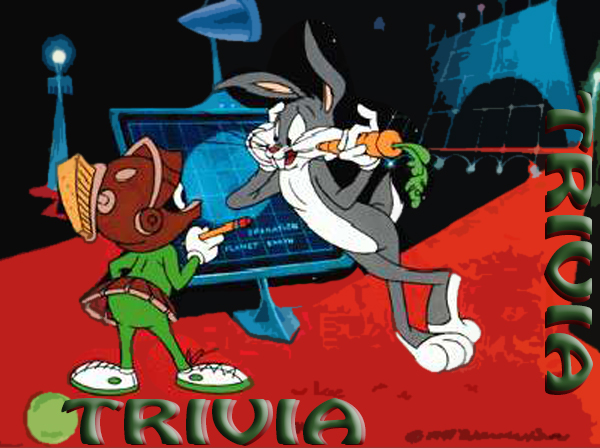
Trivia
● The Universe is at least 15 billion years old, but probably not more than 20 billion years old.
● The sun is about 5 billion years old.
● The earth is about 4.5 billion years old.

A Test for People Who Know Everything
Crater Lake in Oregon is the deepest lake in the United States at 1,932 feet (589 meters). What is the deepest lake in the world?
● Answer for People Who Do Not Know Everything, or Want to Verify Their Answer Wikipedia
Answer to Last Week's Test
There are seven ways a baseball player can legally reach first base without getting a hit. Taking a base on balls - a walk - is one way. Name the other six.
Answer: 1. Hit by Pitch, 2. Fielder's Choice, 3. Reached on Error, 4. Dropped Third Strike, 5. Catcher's Interference (hindering the batter while in the batter's box), 6. Fielder's Obstruction (hindering the batter while he is running to first base) Major League Baseball (MLB)

Joke of the Day
Burglar who was told by a parrot that “Jesus was watching” as he tries to steal a stereo.
Parrot: “I'm just trying to warn you.”
Burglar: “Warn me about what? Who are you?”
Parrot: “My name is Moses.”
Burglar: “What kind of crazy people would name a parrot Moses?”
Parrot: “The same kind of people that would name a 150-pound Rottweiler, 'Jesus' ”
Pun of the Day
Lazy sailors look forward to chore leave.


























